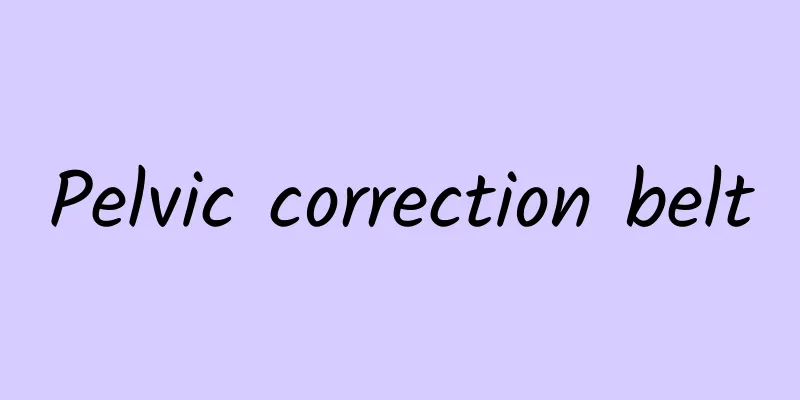Pelvic correction belt

|
A pelvic correction belt is what we often call a pelvic belt. It is usually a tool used by mothers to help restore their pelvis after giving birth. With the improvement of the quality of life, many mothers pay more attention to the recovery of their body shape after childbirth. After giving birth, the biggest changes in women are their belly and pelvis. Regardless of whether it is a normal birth or a caesarean section, the pelvis will become larger. Only when the pelvis becomes larger can the child be delivered smoothly. There are many types of pelvic correction belts. Mothers should choose the type that suits them and use it correctly. However, the daily use time should not be too long. Generally, about 8 hours is best. Try not to use the pelvic correction belt at night, as this will affect the quality of sleep. When choosing a pelvic correction belt, choose one that is better made, softer, and more elastic. Let me introduce it to you in detail below. Importance of Pelvic Restoration If the loose abdominal muscles after childbirth are not properly recovered, it will lead to fat accumulation and bulging of the lower abdomen, which will affect the appearance. If the pelvis is not properly recovered, it will not only lead to big buttocks and widened hips, which will affect the appearance, but also lead to O-shaped legs, low back pain and some gynecological diseases. Therefore, it can be said that the recovery of the pelvis after childbirth is more important than the recovery of the abdominal muscles. Choosing a professional and high-quality pelvic belt for postpartum mothers is extremely effective in restoring the pelvis, correcting the body shape and preventing gynecological diseases. Generally, smart postpartum mothers will not miss this opportunity. Introduction to the types of pelvic correction belts Belt type: also called Japanese belt type. This type is the most common in China after 2010, such as several-piece sets, etc. Most of them are imitations of Japanese styles in recent years. The prices of the same product vary greatly, and they are in the stage of low-quality and low-price competition. Due to simple workmanship, roughness, and poor elasticity, they are often uncomfortable after use. They are prone to sliding up and down with a little activity, and it is difficult to insist on using them. Diamond type: It is invented by combining diamond mechanics structure with ergonomics and biomechanics. It is a more scientific pelvic correction belt that can maximize the effect of assisting pelvic contraction. It is also simple, convenient, comfortable, natural, scientific and practical to use. It is currently favored by obstetricians. Two-strap type: This type is made of two straps and is relatively simple. When using it, one strap is tied around the lower back and the other strap is tied around the base of the legs. Although it seems to be non-slip, it will increase the burden on the lumbar spine and the hip-tightening effect is not ideal. Gauze wrapping: Although this type of wrapping was used early, it is more troublesome to use and the number of users has gradually decreased. Currently, professionals in some postpartum care centers are still helping mothers use it. While wrapping around the abdomen, the hips are also wrapped to achieve the effect of tightening the pelvis. How to use Generally, a professional and high-quality pelvic belt can be used two or three days after a normal delivery, and can be used seven days after a caesarean section when the wound has healed. It should be worn for about eight hours during the day and should be of moderate tightness. Precautions for using the pelvic belt 1. Wrong position of use: As we all know, when women are pregnant or giving birth, the main problem is the pubic symphysis separation and relaxation and ligament damage. Postpartum pelvic recovery mainly refers to this area. The pubic symphysis is roughly balanced with the greater trochanter of the femoral head in the hip (the most raised part of the hip on both sides of the human body). In other words, to restore the pubic symphysis, the hip must be tucked in. Nowadays, quite a number of pelvic belts are used in the wrong position, and they are not even distinguished from abdominal belts and are used on the abdomen. This has no effect on helping to retract the pelvis. 2. Be careful of inferior products: In order to cater to consumers' low-price mentality, some manufacturers only pursue cheapness and do not pay attention to quality and practicality. The materials, workmanship and quality do not meet the requirements. The products are rough, inferior and difficult to use. They are often uncomfortable after use. Some have no elasticity or poor elasticity. There are many entanglements and inconveniences before and after purchase, or they cannot be persisted, which not only wastes time but also misses good opportunities. 3. It is wrong to "lift the hips" after childbirth: As we all know, it is necessary and scientific to quickly recover the widened and enlarged pelvis and relaxed abdominal muscles after childbirth. There is no reason to lift the hips after childbirth. Some have two straps, one at the back waist and the other at the base of the legs. The so-called "hip lift" will only increase the burden on the lumbar spine, causing low back pain and blood circulation in the lower limbs. Therefore, it is wrong to lift the hips after childbirth, and it will not play any role in pelvic recovery. Hip lift is just a gimmick of sellers. Everyone knows the relevant content about the pelvic correction belt, so it is recommended that you use it every day. Do not use it when you remember to use it and do not use it when you don’t remember to use it. This is not conducive to the recovery of the pelvis. In addition, if the mother has a caesarean section, she must wait until the wound heals before using it to avoid affecting the recovery of the wound. |
>>: Four Dos and Seven Don'ts for Men to Give Birth
Recommend
If you are a man, you must remember these "hard knowledge"
A man's lifeline is directly related to his o...
How to treat chronic prostatitis?
Prostatitis is a very common disease and a very t...
What are the dangers of male foreskin being too long?
Male friends should also pay more attention to th...
Male left lower abdominal pain
Pain in the lower left abdomen is a very acute sy...
What medicine is good for male urethral itching
Urethral itching is a health problem that many me...
Why do some people not eat coriander? What are the benefits of eating coriander?
Coriander is a kind of food that is beneficial to...
Which folk remedies for using coix seed to treat gout do you know?
Job's tears is a kind of grain. In addition t...
Warts on scrotum
Scrotal warts are a type of skin disease. They ar...
What causes red bumps on the penis?
Many men do not pay attention to hygiene in their...
Peeling of the glans penis after circumcision
The development of each organ in the human body i...
What causes necrospermia?
Necrospermia is the most common disease among men...
What are the symptoms of Chlamydia trachomatis in men?
Male Chlamydia trachomatis is a kind of body infe...
Itchy testicles and inner thighs
Since the testicles and inner thighs are in the p...
How to enhance male sexual ability?
Improving sexual function is one of the preparati...
Dry mouth when sleeping at night, these factors are at work!
Many men find that they are awakened by thirst ra...









